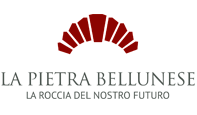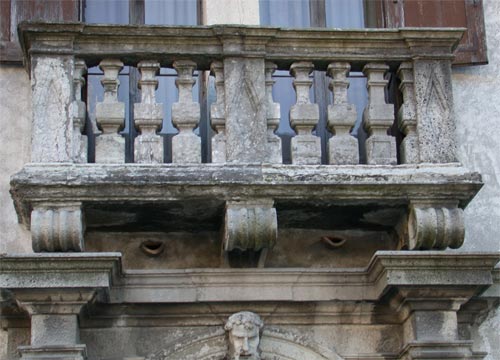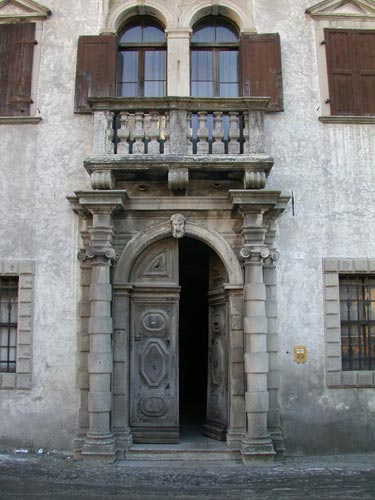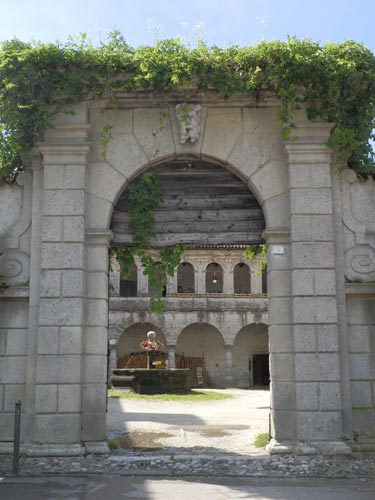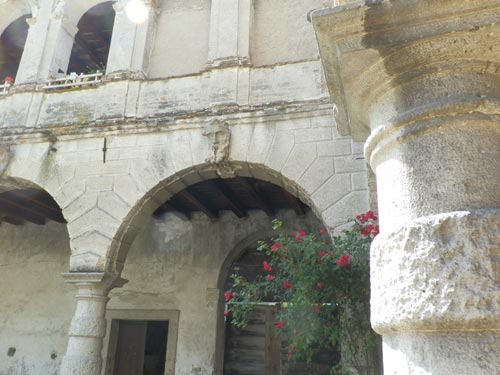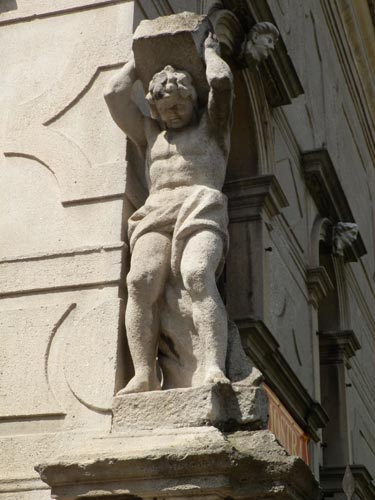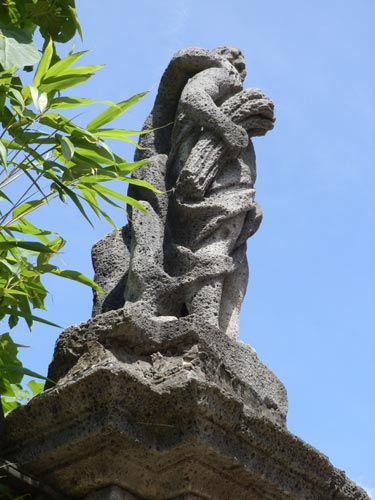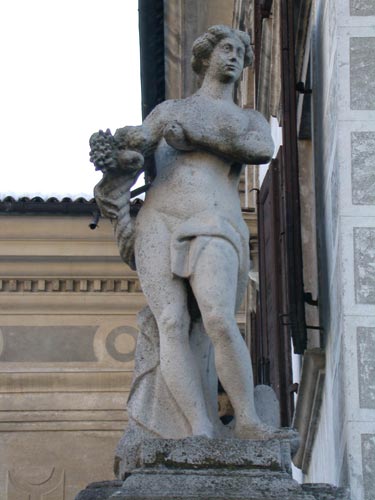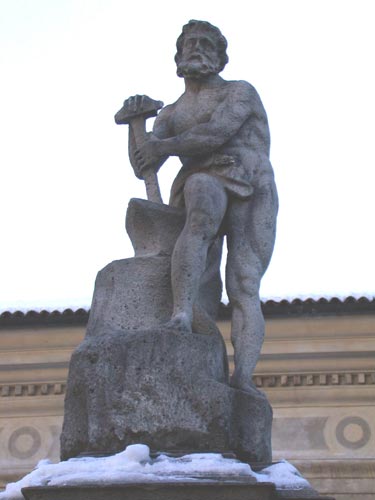A strong material
A strong material
In the entire Val Belluna area there are small quarries, based on widespread stratified limestone with good mechanical and workability characteristics.
The sculptures, known as Pop or mut del Grota, are also found in the columns of the small external garden, which overlooks Piazza della Libertà: they represent figures wearing 16th– and 17th-century clothes and pagan gods inspired by Renaissance beauty standards. Giuseppe Segusini (architect, 1801-1876) records the methodical procedure followed during the process of relevant artistic works: first, stone was extracted and rough-hewn by stonecutters in the quarry. After transportation, rough-hewn blocks were processed by stonecutters and their assistants, considering the working difficulties they had. The ornamental elements were committed to ornament stonecutters on models made by the architect. A 1692 commercial act testifies how local stonecutters were supplied with stones suitable for sculpting statues for the Villa. Moreover, the name Lombardo appears in the act, an artist who was probably the one who worked for the Duomo in Belluno.
The conglomerate is a high-quality homogeneous mixture, in 235x142x80 cm vibro-tamped blocks. Its components are simple and natural Dolomia, water and Portland cement 52,2 granulates. Slabs can be worked with different finishes, as for stone. This natural material is suitable for Alpine as well as for modern environments. In particular, bathrooms are finished with cement stucco or resin: to make the stone more waterproof and for hygienic reasons, pores are filled up. The stone can also be finished with brushing or polishing. Another finish enhancing the material is sandblasting, which highlights the stone porosity by digging in the pores and giving an opacity effect, natural and rough to the touch. Thanks to their anti-slip properties sand-blasted floors are mainly used for exteriors.
The Stone and its architecture today

Bathroom with stucco and patina finish and split-worked basin-edge. Belvedere Hotel, Moena, TN.
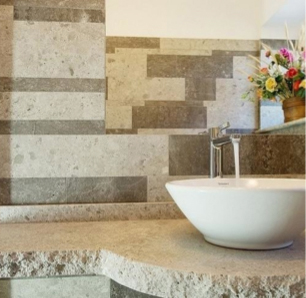
Detail: bathroom in Dolomite stone in different tones of grey with stucco and patina finishes. Belvedere Hotel, Moena, TN.
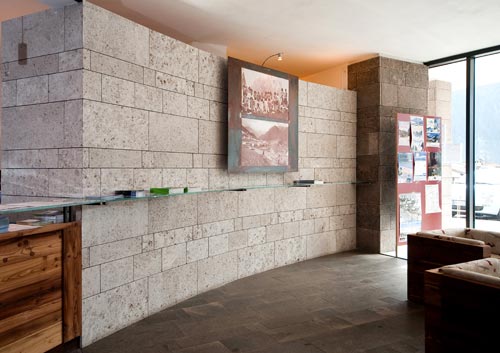
Bush-hammered Dolomite stone-coated wall. APT offices, Vigo di Fassa, TN.
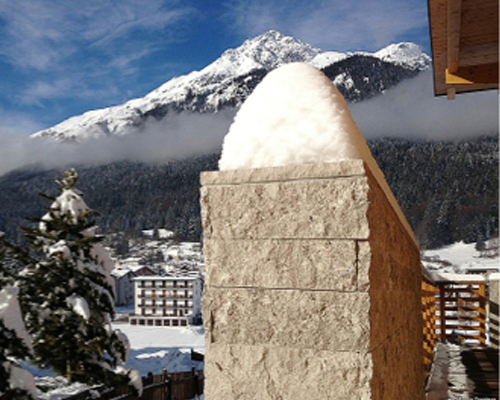
External wall coating, in Dolomite stone bossage, Corona Hotel, Andalo, TN.

Opus incertum, internal wall Dolomite stone coating. Nives Hotel, Selva di Val Gardena, BZ.
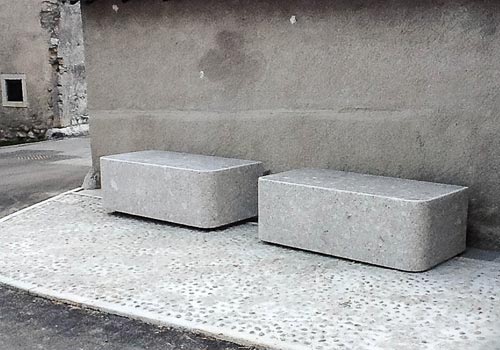
Benches in Dolomite stone.
The Stone and its architecture yesterday

Round basin and column of the original church, Dolomite stone. Among the oldest products made in the village of Cencenighe. Parish curch, Cencenighe. (Photo from Sulle tracce degli scalpellini” book).
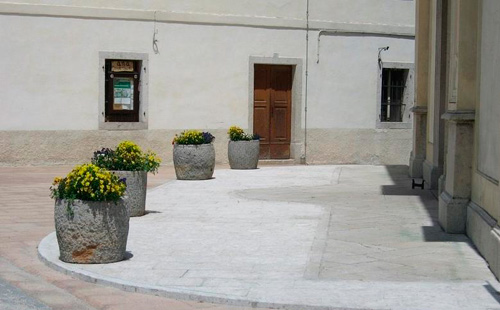
Old Dolomite stone gate and new pavement for the church in Canale d’Agordo, BL.
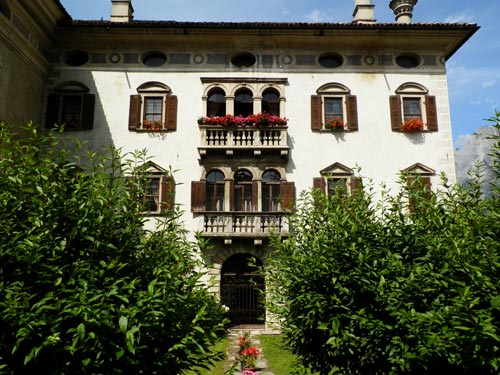
Deatils in Dolomite stone.
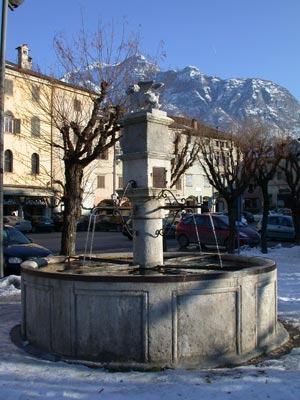
Fountain in Piazza Grande, Agordo.
